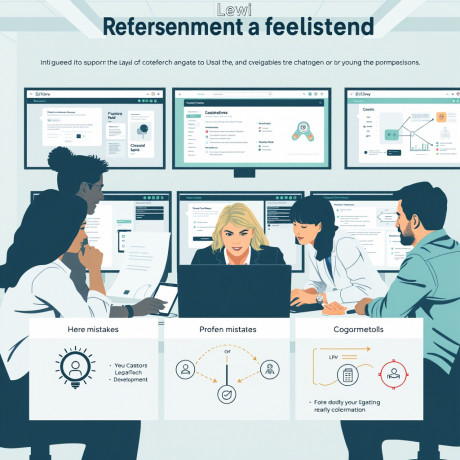1. Lack of Legal Definitions in Questions
Example: A probate bot asks, “Are you a close relative of the deceased?” without clarifying the legal definition (Art. 14 of the Russian Family Code).
Solution:
-
Embed explanations directly in prompts (e.g., “Close relatives include parents, children, siblings”).
-
Add hyperlinks to official sources or video tutorials.
-
Use multiple-choice questions with a “None of the above” option.
2. Ignoring User Context
Example: A divorce bot asks about child custody disputes even after the user states they have no minor children.
Solution:
-
Implement conditional logic to skip irrelevant questions.
-
Use variables to track user responses and adjust workflows.
3. Missing Reference Links
Example: A trademark registration bot requests a “WIPO ST.3 code” without providing guidance.
Solution:
-
Link to Rospatent’s database or Ministry of Economic Development guidelines.
-
Include buttons for real-time examples or templates.
4. Ineffective Feedback in Legal Quizzes
Example: A compliance test bot only states “Some answers are incorrect” without specifics.
Solution:
-
Generate personalized reports citing relevant laws (e.g., Civil Code Art. 196).
-
Provide visual scorecards and corrective action steps.
5. Oversimplifying Legal Scenarios
Example: A leave management bot denies vacation rights if no schedule exists, ignoring exceptions under Labor Code Art. 123.
Solution:
-
Add branching logic for edge cases (e.g., pregnancy, hazardous work conditions).
-
Validate user status before applying default rules.
6. Incomplete User Support
Example: A workplace injury bot explains compensation rules but doesn’t generate a claim form.
Solution:
-
Integrate document builders with pre-approved templates (e.g., accident report forms per Labor Code Art. 229.1).
-
Include deadlines and jurisdiction-specific requirements.
7. Overusing Yes/No Questions
Example: A bankruptcy bot forces users through endless binary prompts instead of multi-select options.
Solution:
-
Replace with multiple-choice questions (e.g., “Select applicable bankruptcy grounds: Art. 213.4, Federal Law No. 127”).
-
Allow multi-select checkboxes for complex cases.
8. Poor Project Structuring
Mistake: Cluttering all entities (documents, variables) into a single workspace.
Solution:
-
Organize modules by legal domain (e.g., “Family Law,” “IP Rights”).
-
Apply naming conventions like “Client_BirthDate” or “Case_Status.”
9. Incomplete Answer Options
Example: A tax status question lacks a “None of the above” option, causing logic errors.
Solution:
-
Add an “Other” choice with a free-text field.
-
Configure auto-reset rules for conflicting selections.
10. Flawed Calculation Logic
Example: A penalty calculator lacks a branch for amounts equal to RUB 5 million.
Solution:
-
Use inclusive operators (≥, ≤) instead of >/<.
-
Validate inputs (e.g., integer-only fields for “Days Overdue”).
11. Redundant Questions
Example: A leave bot starts with, “Do you want advice about vacation?”
Solution:
-
Eliminate obvious onboarding steps.
-
Use progress bars to indicate consultation stages.
Key Takeaway: Low-code platforms democratize LegalTech development, but success requires meticulous attention to legal accuracy and user experience. Always test bots against real-world scenarios and update them alongside regulatory changes.
